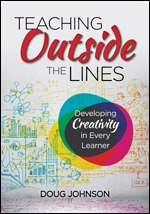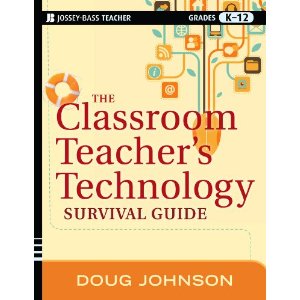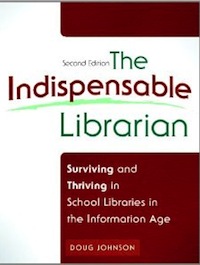DIPs and home access
 Sunday, October 28, 2007 at 09:13AM
Sunday, October 28, 2007 at 09:13AM Not long after I took my current job in 1991, my dad came to visit. I gave him the nickel tour of my offices - the secretarial area, the printshop, the repair area, the film library, the book processing area, the mail room, the computer tech workspaces, etc. After I explained all my department was in charge of and introduced him to my staff, he turned to me and said quietly, "And they put you in charge of this?"
As I reflect on the task ahead of me this fall and winter - evaluating the need for a new student information system, potentially selecting a new one, and then implementing the change that will touch every teacher, every administrator, and every parent in the district, and potentially every student - I too wonder "should they have put me in charge of this?' The task is daunting to be sure.
We did this once before in 1997 when we replaced the stand alone OSIRIS student information system with the networked SASIxp SIS, added classroom-networked attendance and gradebooks, and started the parent portal. It wasn't pretty for a while. It's when I formulated Johnson’s Policy on Implementing Large Technology Systems: I’d rather be optimistic than right. (For a more extensive look at our district's technology planning philosophy and processes, link here.)
This is a simple diagram of our DIP (District Information Plan) in 1997:

And this is what the draft of our 2007 DIP is looking like: (Click on the image for a larger pdf version)
While our 1997 plan called for:
- No data to be entered manually more than once.
- Make sure all data bases allow for easy importing and exporting.
- Never use paper when electricity will do. (How many paper forms can you convert?)
- Use electronic storage for seldom used or often modified documents. (Curriculum guides, etc.)
- Give the end user a part in choosing the system.
- Balance ease of access with the need for security. How much home access is necessary?
- Make it impossible to do the job any other way.
the School Interoperability Framework was not available, and databases have since seemed to grow like weeds.
Two other major changes have occurred since 1997:
1. We've succeeded with our objective 7 above: Make it impossible to do the job any other way. If this stuff doesn't work, many, many people simply can't do their jobs - or do them as efficiently and effectively. Trust me, we hear about it when the network is down, even for a few mintues.
2. Parents' and students' expectations of access to school resources from home grows every year. While we've worked on this deliberately, we've not reached the level of transparency and student/parent centeredness that visionary Jeff Utecht suggests.
It could be argued that parents and students ought to have access to all data that pertain to them. If we re-color the chart above, that means that everything but the gray elements below should be readily available to homes:

I expect some interesting discussions to come from our review and possible selection of a new SIS, and perhaps a new model of data management in the district. I'm extremely fortunate to have an excellent tech staff and some brave user-volunteers to serve on the evaluation committee.
With help like that, even putting me in charge shouldn't be too bad.










Doug,
I've posted this, but wanted to send it to your posting since you are discussing teachers and technology adoption.
Let's just suppose we didn't have to use every new thing...
Today I cataloged and inventoried one of those interactive response units being sold to work with smartboards, whiteboards, and so on. The teachers using it are all excited, the kids think it's cool and I'm pretty sure the school tech people are cheering it on as well.
Well, not so fast, let's think about this. I've used these things at Dept of Ed meetings and as with most types of new technology, if one isn't careful, the lowest possible use is most popular. At the DOE mtg, we were given prefab multiple choice responses to the issues we'd met to discuss for two days. Now, rather than the give and take between thoughtful professionals sparking new ideas and conversation, we clicked on 1 if we wholeheartedly agreed, 2 if we sort of agreed, 3 if we didn't really disagree, and 4 if we just didn't care. OK, so those weren't the real choices but you get the idea. Worse, the instant gratification of this exercise was met with wows and gee whiz from all quarters. Sure we knew in seconds that 52% chose 1, but would they have chosen 1 if a passionate number 3 had spoken?
Now as professionals at a conference we should know how to correctly interpret and discard such nonsense when it occurs. What has me concerned is the underlying message we are giving kids by using this in classrooms. If we are just tallying up strictly objective, numerical, no doubter type answers, it's probably not terrible. But you know, you just know, that someone will want to be "on the cutting edge" and use it to gather responses to all sorts of questions. I'm afraid that the kids will come to expect, demand, immediate answers, immediate feedback as a matter of course. Life's not like that, at least not a considered, thoughtful life.
Sometimes, often, one needs to hear opposing views and think about them for a day or two. One might change their mind, it happens. I think I'm right when I take a position, but people and experiences have changed my mind many times. The idea that we will always arrive at the conclusion in one sitting is terrible training for our children.
I guess you can use these devices with my blessing if answer 4 is "Let me sleep on it."